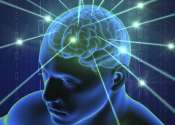How electricity can heal wounds three times faster
Chronic wounds are a major health problem for diabetic patients and the elderly—in extreme cases they can even lead to amputation. Using electric stimulation, researchers in a project at Chalmers University of Technology, ...
Apr 18, 2023
1
2708









